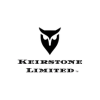Becoming VAT (Value Added Tax) registered can feel like a daunting subject for small business owners, but it’s an unavoidable part of running a compliant and growing business in the UK. Whether you’ve hit the VAT threshold or are considering voluntary registration, understanding the ins and outs of registering for VAT will make the process less daunting.
- What Is VAT and Who Needs to Register?
VAT is a consumption tax applied to most goods and services sold in the UK. Businesses charge VAT on their sales (output VAT) and can reclaim VAT on purchases (input VAT), creating a balanced system of taxation.
When Do You Need to Register for VAT?
You must register for VAT if:
- Your business’s taxable turnover exceeds £90,000 in any rolling 12-month period.
- You expect your turnover to exceed the threshold in the next 30 days.
However, you can also choose to register voluntarily, even if your turnover is below the threshold. This can be beneficial for reclaiming VAT on business expenses or improving credibility with clients.
- How to Register for VAT
The Registration Process
- Online Registration: Most businesses register for VAT through HMRC’s online portal. You’ll need your business’s Unique Taxpayer Reference (UTR), bank details, and information about your turnover and business activities.
- VAT Certificate: Once registered, HMRC will issue a VAT registration certificate. This includes your VAT number and confirms your effective registration date.
- Voluntary Registration: If registering voluntarily, provide details of why you want to register and how your business operates.
Timeframe
HMRC typically processes VAT registrations within 10-14 working days, but delays often occur, so it’s best to register early if you anticipate crossing the threshold.
From the date of your VAT registration, you’ll need to add 20% VAT to your invoices, even while waiting for your VAT number to arrive. Be sure to inform your clients about the situation, explaining that a formal VAT invoice will follow once you receive your VAT number. Once it arrives, re-issue an updated VAT invoice to ensure everything is compliant.
- What Are Your Responsibilities After Registering for VAT?
Once VAT registered, you’ll need to comply with several ongoing responsibilities:
Charging VAT
- Add VAT to the price of taxable goods or services. For most items, the standard VAT rate is 20%, but reduced (5%) and zero rates also apply depending on the type of goods or services.
Issuing VAT-Compliant Invoices
Every invoice you issue must include:
- Your VAT registration number.
- The VAT rate applied and the total amount of VAT charged.
- A breakdown of goods or services provided.
Keeping Accurate Records
Maintain detailed records of:
- Sales invoices (output VAT).
- Purchase receipts (input VAT).
- VAT returns filed and any adjustments.
Submitting VAT Returns
VAT returns are often submitted quarterly but sometimes also monthly, using Making Tax Digital (MTD) compliant software. These returns calculate how much VAT you owe HMRC or how much they owe you.

- What Are the Benefits of Registering for VAT?
While registering for VAT is a legal requirement once you cross the threshold, there are also strategic advantages:
- Claiming VAT on Business Expenses
VAT-registered businesses can reclaim VAT paid on goods and services used for business purposes. This can significantly reduce costs, especially for VAT-heavy industries like manufacturing or retail.
- Improved Credibility
Being VAT registered can enhance your business’s reputation, making it appear larger and more established to clients and customers.
- Voluntary Registration Benefits
If most of your clients are VAT-registered businesses, they can reclaim the VAT you charge, meaning your prices remain competitive even after adding VAT.
However, if your customers are primarily consumers, registering for VAT may increase your prices and impact affordability.
Common FAQs About VAT Registration
- What Happens If I Don’t Register for VAT on Time?
Failing to register once you hit the threshold can result in penalties and backdated VAT payments. HMRC may impose a late registration penalty based on how long the registration was delayed and the VAT owed.
- Do I Need to Register for VAT If I Only Sell Online?
Yes, VAT applies to both physical and online sales. If your taxable turnover exceeds the threshold, you must register regardless of how your goods or services are sold.
- Can I Deregister for VAT?
Yes, you can deregister if your business turnover falls below the deregistration threshold (currently £88,000) or if you cease trading. However, you’ll need to settle any outstanding VAT owed to HMRC.
- What Is the Flat Rate Scheme?
The Flat Rate Scheme simplifies VAT calculations for small businesses. Instead of calculating 20% VAT on every transaction, you pay a lower fixed percentage of your turnover. However, you cannot reclaim VAT on most purchases under this scheme. This scheme is more ideal for businesses with few expenses.
- Managing VAT Effectively
Being VAT registered doesn’t have to be overwhelming. Here are some tips to stay on top of your VAT responsibilities:
- Use MTD Software: Invest in HMRC-approved software like Xero or QuickBooks to simplify VAT return filing and compliance.
- Set Aside Funds for VAT Payments: Avoid cash flow issues by regularly setting aside VAT owed to HMRC.
- Work with an Accountant: A professional accountant can ensure accurate VAT reporting, help with reclaiming VAT, and advise on schemes like cash accounting or flat rate.
Simplify VAT with Expert Guidance
Registering for VAT is a significant step for any growing business. While it comes with added responsibilities, it also opens the door to tax savings and credibility. By understanding the requirements, benefits, and common mistakes, you’ll be well-prepared to go VAT registered with confidence.
If you’re unsure about VAT registration or need help managing VAT compliance, we’re here to assist. At Keirstone, we specialise in supporting small businesses with all aspects of VAT, from registration to ongoing reporting.
Schedule a free consultation today, and let’s simplify your VAT journey so you can focus on growing your business.
